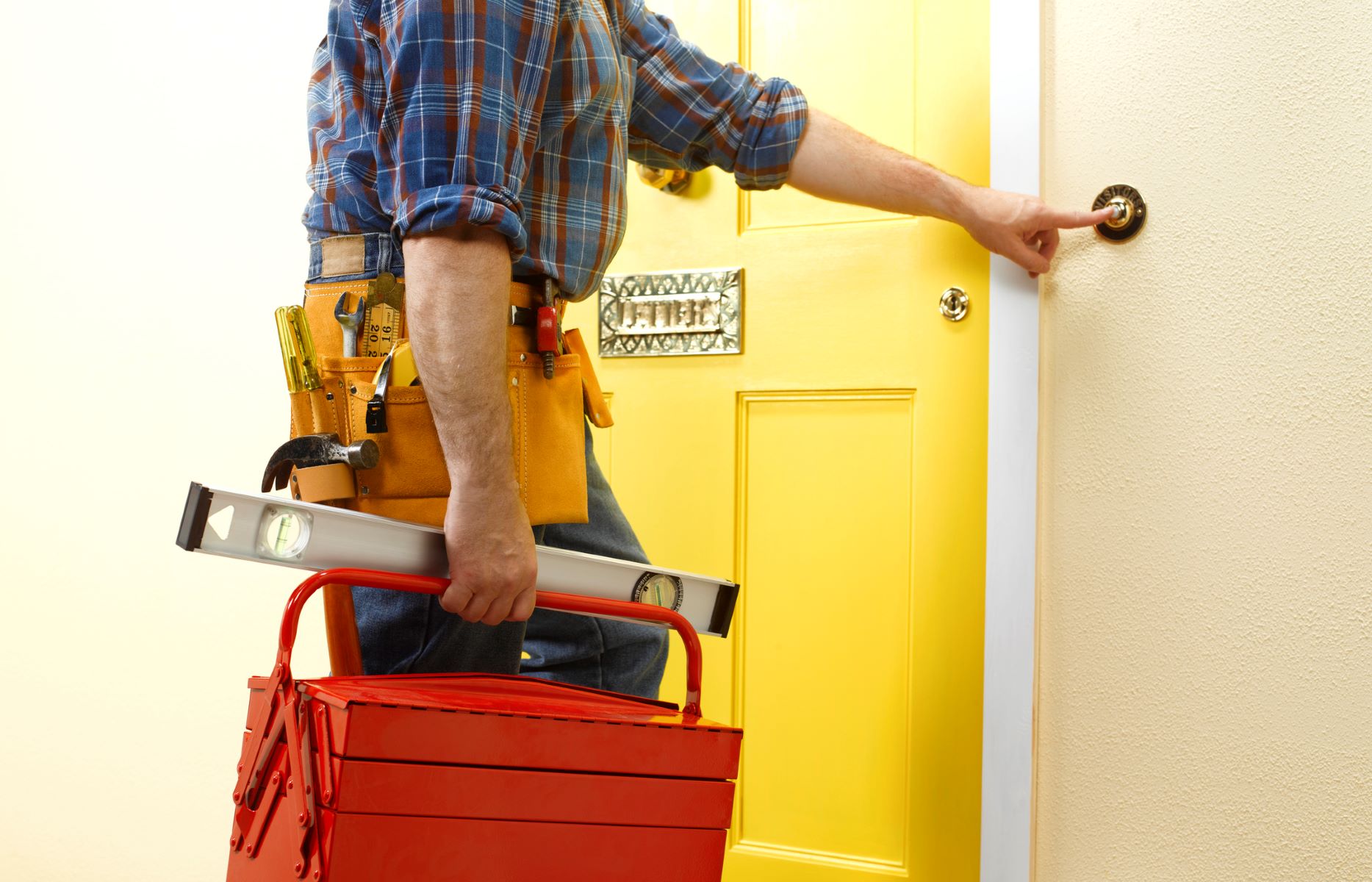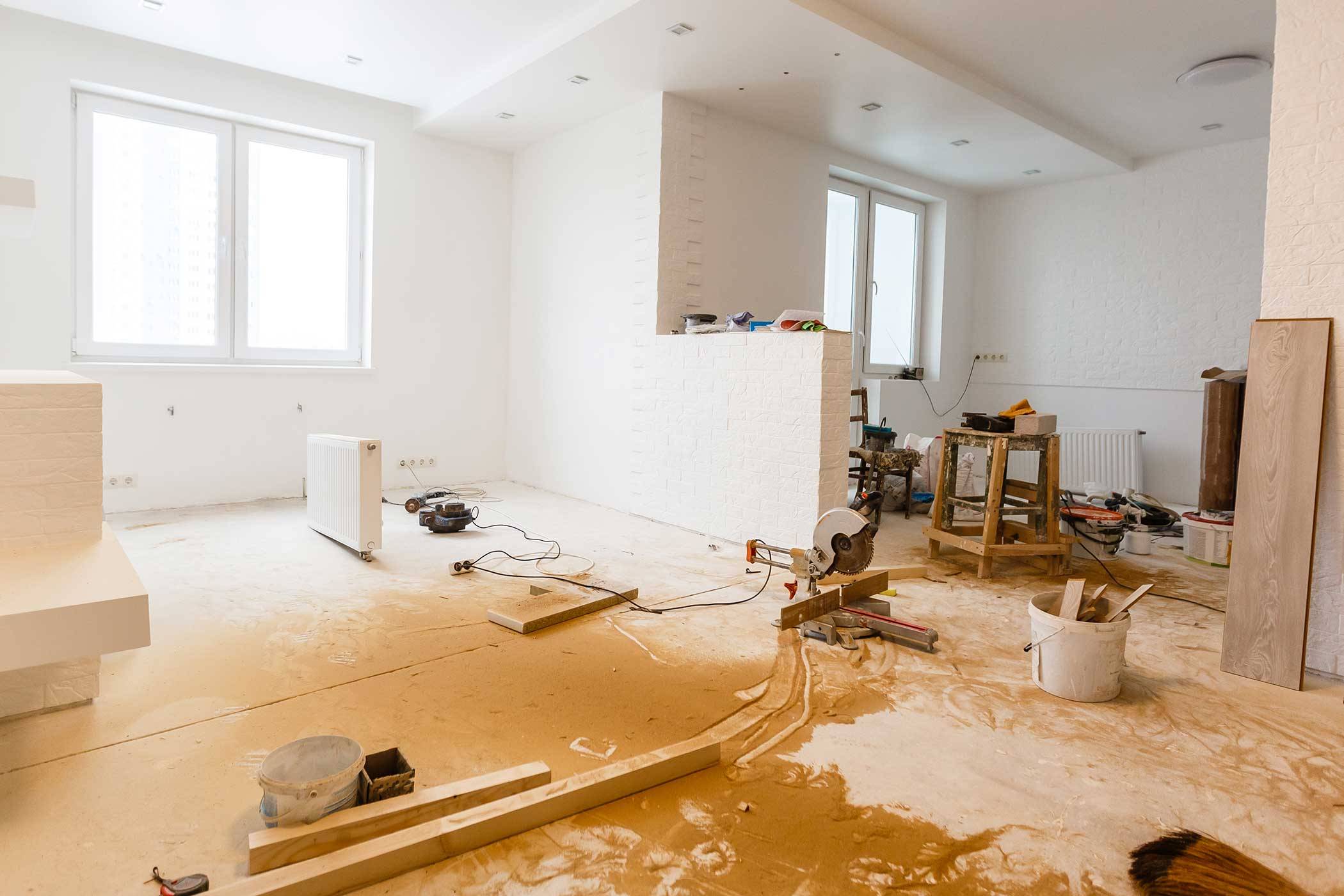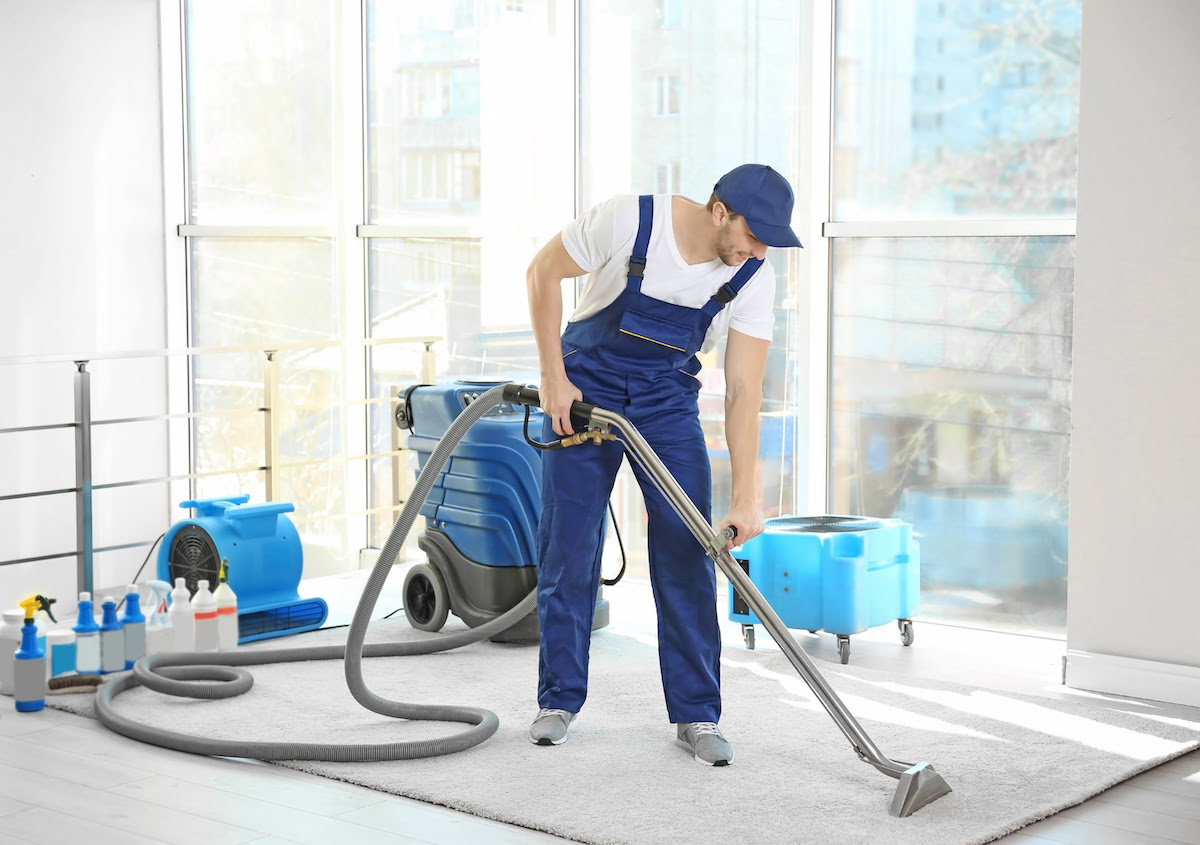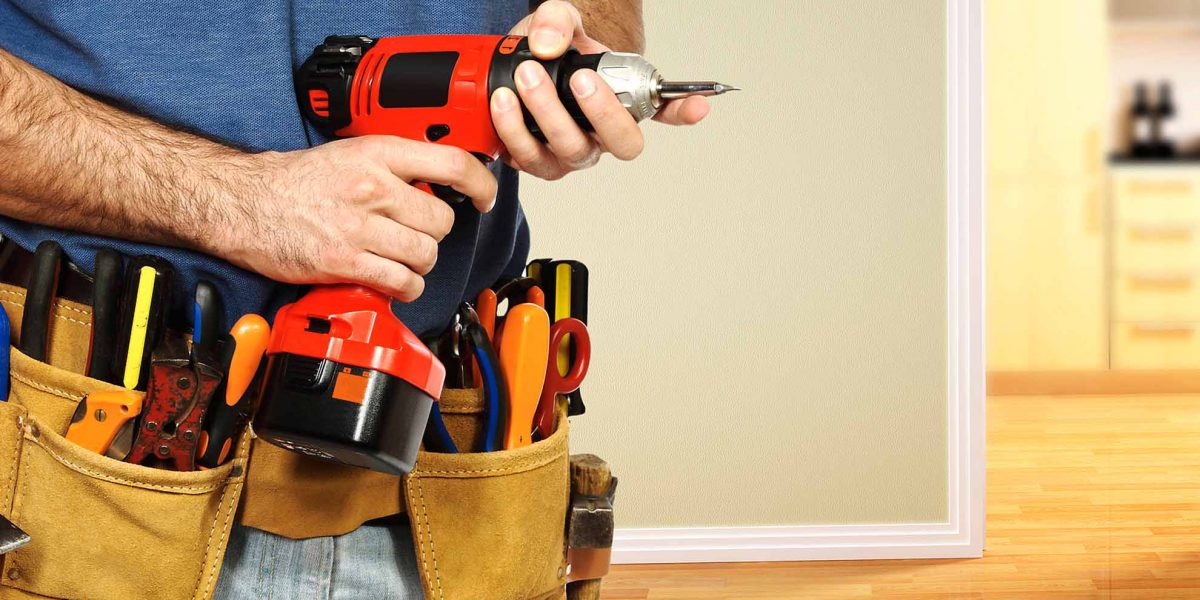Home>Home Maintenance>How To Start A Home Maintenance And Repair Business


Home Maintenance
How To Start A Home Maintenance And Repair Business
Modified: March 6, 2024
Learn how to start your own home maintenance and repair business with our comprehensive guide. Discover the essential steps, tips, and strategies to succeed in the lucrative home maintenance industry.
(Many of the links in this article redirect to a specific reviewed product. Your purchase of these products through affiliate links helps to generate commission for Storables.com, at no extra cost. Learn more)
Introduction
Starting a home maintenance and repair business can be a rewarding and profitable venture for those with knowledge and expertise in various areas of home improvement. Whether you are an experienced professional looking to start your own business or someone with handy skills looking to turn their passion into a career, the home maintenance and repair industry offers a wide range of opportunities.
From fixing plumbing issues to renovating kitchens, there is always a demand for reliable and skilled professionals who can handle the various maintenance and repair needs of homeowners. This article will guide you through the essential steps to start your own home maintenance and repair business.
By following these steps, you can lay a strong foundation for your business and position yourself as a trusted service provider in the industry. Let’s dive into the details and get you on the path to success!
Key Takeaways:
- Find your niche: Specialize in a specific area of home maintenance to stand out and attract clients who need your expertise. Focus on excelling in one field rather than offering a wide range of services.
- Provide exceptional service: Focus on delivering high-quality work, personalized solutions, and transparent communication to build a loyal customer base and generate positive word-of-mouth referrals.
Read more: How To Start A Garage Door Business
Step 1: Determine your business niche
When starting a home maintenance and repair business, it’s important to determine your niche. This will help you focus your services and target a specific audience. By specializing in a particular area, you can establish yourself as an expert and differentiate yourself from competitors.
Consider your skills, experience, and interests when determining your niche. Are you particularly skilled in electrical work? Maybe you have a background in carpentry or plumbing. Evaluate what you enjoy doing and where your expertise lies.
Additionally, consider the demand for different services in your area. Research local market trends and analyze the competition to identify opportunities for specialization. For example, if there is a high demand for kitchen renovations in your area, you may want to focus on offering kitchen remodeling services.
Once you have determined your niche, you can tailor your services, marketing strategies, and pricing accordingly. By narrowing down your focus, you can become known as the go-to expert in your chosen field and attract clients who specifically need those services.
Remember, it’s better to excel in a specific area than to offer a wide range of services without excelling in any particular field. Your expertise and specialization will help you stand out and build a strong reputation in the industry.
Step 2: Create a business plan
Creating a comprehensive business plan is essential for the success of your home maintenance and repair business. It will serve as a roadmap and guide you through the various aspects of your business, from defining your goals to outlining your financial projections.
Start by clearly defining your business objectives. What do you hope to achieve with your business? Do you want to focus on residential clients or do you plan to offer services to commercial properties as well? Determine your target market and identify the unique selling points that will set your business apart.
Next, conduct a market analysis to understand the demand for your services in your area. Research the competition, their pricing, and their marketing strategies. Identify your target audience and develop strategies to reach them effectively.
Outline your services and pricing structure. Consider the costs involved in starting and running your business, including equipment, supplies, insurance, and any licensing fees. Create a budget and financial projections that encompass your expected expenses and potential revenue.
Don’t forget to include a marketing plan in your business plan. Determine the best ways to promote your business, such as utilizing online platforms, social media, local advertising, and word-of-mouth referrals. Consider attending trade shows or joining community organizations to network with potential clients and build partnerships.
Finally, it’s crucial to have a contingency plan in place. Anticipate challenges that may arise and outline strategies to overcome them. By having a well-thought-out business plan, you’ll have a clear direction for your business and be better prepared to tackle obstacles along the way.
Remember to regularly review and update your business plan as your business evolves. Adapt to changing market conditions and constantly seek new opportunities for growth and improvement.
Step 3: Obtain necessary licenses and permits
Before you can legally operate your home maintenance and repair business, you need to obtain the necessary licenses and permits. Compliance with local regulations is crucial to ensure that your business operates within the boundaries of the law.
Start by researching the licensing requirements in your area. Contact your local government or licensing board to determine the specific licenses and permits you need to obtain. Requirements may vary depending on your location and the type of services you offer.
Some common licenses and permits you may need include:
- Contractor’s license: If you will be performing major renovations or construction work, you may need a contractor’s license. This license ensures that you meet certain standards and qualifications to carry out the work.
- Business license: Most jurisdictions require all businesses to obtain a general business license. This license allows you to legally operate your business within that jurisdiction.
- Trade-specific licenses: Depending on the services you offer, you may need specialized licenses such as plumbing, electrical, or HVAC licenses. These licenses ensure that you have the necessary skills and knowledge to perform these specific tasks.
- Insurance: While not a license, it is crucial to have the right insurance coverage for your business. This includes general liability insurance to protect against accidents or damage to property, as well as worker’s compensation insurance if you have employees.
Additionally, you may need to register your business with the appropriate authorities for tax purposes. Consult with an accountant or tax professional to ensure compliance with local tax laws.
Obtaining the necessary licenses and permits may involve filling out application forms, submitting documentation, paying fees, and passing exams or inspections. It is important to start the process well in advance to avoid any delays in launching your business.
By obtaining the required licenses and permits, you will not only comply with local regulations, but you will also build trust and credibility with your clients. It shows that you are a legitimate business and have the necessary qualifications to provide your services.
Step 4: Set up your home maintenance and repair business
Once you have obtained the necessary licenses and permits, it’s time to set up your home maintenance and repair business. This step involves establishing your business structure, setting up a workspace, and acquiring the necessary equipment and supplies.
Start by choosing a business structure that best suits your needs. You may opt to operate as a sole proprietorship, a partnership, or register your business as a limited liability company (LLC). Consult with a legal professional or business advisor to determine the most suitable structure for your specific circumstances.
Next, consider the location of your business. If you plan to work from home, make sure you have a dedicated workspace that is equipped with the necessary tools and equipment for your services. If you need a physical location, research potential office or workshop spaces in your area.
As a home maintenance and repair business, you will need a variety of tools and equipment to perform your services. Make a list of the essential tools based on your niche, and invest in high-quality equipment that will help you deliver exceptional results. This might include tools such as wrenches, saws, drills, and measuring devices.
In addition to tools, stock up on supplies that you will regularly need for your services. This may include items like screws, nails, adhesives, paint, and various types of hardware. Establish relationships with reliable suppliers to ensure a steady supply of quality materials.
Don’t forget to set up an office administration system to manage your business operations efficiently. This includes organizing paperwork, setting up accounting software, and implementing a scheduling system to keep track of appointments and projects.
Finally, consider investing in technology that can streamline your business processes. This may include a website to showcase your services, an online booking system for client appointments, and accounting software to manage your finances.
By setting up your home maintenance and repair business with careful thought and attention to detail, you will create a solid foundation for success and be ready to provide exceptional services to your clients.
Read more: How To Start An Insulation Business
Step 5: Develop a pricing strategy
Developing a pricing strategy is crucial in ensuring the profitability and sustainability of your home maintenance and repair business. Finding the right balance between attracting customers and covering your costs is essential for long-term success.
Start by researching the market and understanding the pricing trends in your industry. Consider factors such as the demand for your services, the level of competition, and the average rates charged by other professionals in your area.
When determining your prices, it’s important to consider the following:
- Cost of materials and supplies: Calculate the cost of materials and supplies required for each project. This includes the cost of purchasing or replenishing tools, as well as the price of the consumable materials used during repairs or installations.
- Labor and overhead costs: Factor in the time and effort involved in completing each job. Take into account your own labor costs if you are working alone or the wages of your employees if applicable. Additionally, consider the overhead costs such as rent, utilities, insurance, and vehicle expenses.
- Profit margin: Determine the level of profit you wish to achieve for each project. This should be a reasonable amount that covers your business expenses and ensures growth and sustainability.
- Market demand: Assess the demand for your services and adjust your prices accordingly. If you are in high demand and have a reputation for quality work, you may be able to charge premium rates. However, if you are entering a competitive market or trying to attract new clients, you may need to offer competitive or introductory pricing to build your customer base.
- Value proposition: Consider any special skills, expertise, or added value you provide compared to your competitors. Unique selling points such as exceptional customer service, craftsmanship, or specialized knowledge may justify higher prices.
Avoid the temptation to underprice your services to attract clients. While lowering prices may initially attract customers, it can be detrimental to your business in the long run. Instead, focus on providing quality work, excellent customer service, and demonstrating the value you bring to your clients.
Regularly review and assess your pricing strategy based on market conditions and the performance of your business. Adjust your prices as needed to ensure that you are covering costs, generating profit, and remaining competitive in the market.
By developing a well-thought-out pricing strategy, you can position your home maintenance and repair business for success, profitability, and continued growth.
Tip: Research your local market to understand the demand for home maintenance and repair services. Identify your target customers and their needs to tailor your business offerings.
Step 6: Market and Advertise Your Business
To attract clients and grow your home maintenance and repair business, you need to implement effective marketing and advertising strategies. By reaching your target audience and showcasing the value of your services, you can generate leads, increase brand awareness, and establish a strong reputation in the industry.
Here are some key steps to market and advertise your business:
- Create a compelling brand: Develop a strong brand identity that reflects your values, services, and target market. This includes designing a professional logo, establishing a cohesive visual identity, and crafting a compelling brand message.
- Build a professional website: Your website serves as the online face of your business. It should be visually appealing, easy to navigate, and provide relevant information about your services, pricing, contact details, and testimonials. Optimize your website for search engines (SEO) to improve its visibility and drive organic traffic.
- Utilize online directories: List your business on popular online directories such as Google My Business, Yelp, and Angie’s List. This will increase your online visibility and make it easier for potential customers to find you when searching for home maintenance and repair services.
- Engage in social media: Leverage social media platforms such as Facebook, Instagram, and LinkedIn to promote your business. Regularly post engaging content, share before-and-after project photos, and interact with your followers. Consider running targeted ads to reach a wider audience.
- Utilize local advertising: Advertise your business in local publications, newspapers, or magazines. Target specific neighborhoods or communities where you want to attract clients. Additionally, consider sponsoring local events or participating in community initiatives to raise awareness about your business.
- Develop a referral program: Encourage satisfied customers to refer your services to their friends and family. Offer incentives such as discounts or referral rewards to incentivize referrals and generate word-of-mouth marketing.
- Ask for testimonials and reviews: Request testimonials and online reviews from satisfied clients. Positive reviews can greatly influence potential customers and build trust in your services. Display these testimonials on your website and social media platforms.
- Network and collaborate: Attend industry events, join local business associations, and network with other professionals in related fields. Building relationships with real estate agents, interior designers, and contractors can lead to referrals and collaborative opportunities.
Remember, consistency is key. Continuously monitor and evaluate the effectiveness of your marketing efforts and make adjustments as needed. Stay active and engaged with your audience both online and offline to maintain a strong presence in the industry.
By implementing a well-rounded marketing and advertising strategy, you can increase your brand visibility, attract more potential clients, and grow your home maintenance and repair business.
Step 7: Build a Network of Suppliers and Contractors
Building a strong network of suppliers and contractors is crucial for the success of your home maintenance and repair business. By establishing relationships with reliable and skilled professionals, you can ensure a steady supply of materials, access specialized expertise, and provide comprehensive services to your clients.
Here are some steps to help you build a reliable network:
- Research and vet suppliers: Look for suppliers that offer quality materials at competitive prices. Research online, visit local suppliers or attend trade shows to identify potential partners. Consider factors such as reliability, product range, delivery options, and customer service when selecting suppliers.
- Negotiate favorable terms: Once you have identified suppliers, negotiate favorable terms such as discounts for bulk orders or extended payment terms. Building a strong relationship with suppliers can lead to mutually beneficial arrangements and better pricing.
- Develop a contractor referral network: Identify contractors who specialize in areas outside of your expertise. Creating a network of trusted contractors allows you to offer comprehensive services to your clients. This could include electricians, plumbers, HVAC technicians, and other specialized tradespeople.
- Evaluate contractor qualifications: When selecting contractors, verify their qualifications, licenses, and insurance coverage. Ensure that they have the necessary expertise and experience to perform high-quality work. Check references and reviews, and establish clear communication channels to maintain a smooth workflow.
- Maintain open lines of communication: Establish clear communication channels with suppliers and contractors. Regularly communicate your needs, project timelines, and any changes or updates. This helps to streamline processes, avoid delays, and ensure seamless collaboration.
- Provide ongoing feedback: Offer feedback and constructive criticism to suppliers and contractors. This helps to build strong relationships and allows them to improve their services based on your input. Similarly, appreciate and acknowledge their efforts when they provide exceptional service.
- Attend industry events and join associations: Networking opportunities are abundant in the home maintenance and repair industry. Attend industry events, trade shows, and conferences to meet suppliers, contractors, and other professionals. Join local or regional associations to stay up-to-date with industry trends and connect with potential partners.
Remember, building a network takes time and effort. Continuously nurture these relationships by maintaining open lines of communication and showing mutual respect. By building a reliable network of suppliers and contractors, you can ensure efficient operations, deliver high-quality services to your clients, and ultimately differentiate yourself in the market.
Step 8: Provide Exceptional Customer Service
In the home maintenance and repair business, exceptional customer service is key to establishing a strong reputation, gaining customer loyalty, and generating positive word-of-mouth referrals. Going above and beyond to meet and exceed customer expectations can set your business apart from competitors and contribute to long-term success.
Here are some important strategies to provide exceptional customer service:
- Be responsive: Respond promptly to customer inquiries, whether through phone calls, emails, or social media messages. Aim to address their concerns or questions within a reasonable timeframe. Clear communication and attentiveness are crucial in building trust with your customers.
- Listen and understand: Take the time to listen carefully to your customers’ needs and concerns. Understand their expectations and work towards finding the best solutions for their specific requirements. Empathy and active listening are essential in showing customers that their needs are valued and understood.
- Offer personalized solutions: Tailor your services to the unique needs and preferences of each customer. Treat every project as a custom job and provide personalized recommendations and solutions. This level of attention to detail can make customers feel valued and appreciated.
- Be transparent: Maintain transparency in your communication and pricing. Provide detailed quotes, clearly outlining the scope of work and associated costs. Avoid surprises or hidden fees. Transparency helps build trust and ensures that customers feel confident in your services.
- Deliver high-quality workmanship: Strive for excellence in every aspect of your work. Deliver professional, high-quality services that meet or exceed industry standards. Attention to detail, precision, and a commitment to quality craftsmanship will leave a lasting impression on your customers.
- Follow up after completion: Reach out to customers after a project is complete to ensure their satisfaction. This could be through a phone call, email, or a follow-up survey. Address any concerns or issues promptly and take corrective actions if necessary. Showing that you value their feedback and are committed to their satisfaction is essential for building long-term relationships.
- Implement a customer loyalty program: Reward loyal customers with incentives such as discounts or priority scheduling. A loyalty program helps foster repeat business and encourages customers to refer your services to others.
- Continuously improve: Seek feedback from your customers and actively work on implementing improvements based on their suggestions. Regularly assess your own performance and identify areas for growth and learning. The goal is to consistently enhance your customer service and exceed customer expectations.
Remember, satisfied customers are more likely to become repeat customers and to refer your services to others. By providing exceptional customer service, you can build a loyal customer base that will support the growth and success of your home maintenance and repair business.
Read more: How To Start A Chimney Cleaning Business
Step 9: Expand and Grow Your Business
As you establish a strong foundation for your home maintenance and repair business, it’s important to think about expansion and growth opportunities. By continuously seeking new avenues for development, you can maximize your business’s potential and increase profitability.
Here are some strategies to help you expand and grow your business:
- Offer additional services: Assess the needs of your existing customers and consider expanding your services to meet those needs. For example, if you primarily offer plumbing services, you might consider adding electrical or landscaping services. Expanding your service offerings allows you to cater to a wider range of customer needs and generate additional revenue.
- Target new markets: Consider expanding your reach by targeting new markets or customer segments. This could involve geographically expanding your service area or focusing on a specific customer group, such as commercial properties or property management companies.
- Form strategic partnerships: Collaborate with complementary businesses to form strategic partnerships. For example, you might partner with interior designers, real estate agents, or property managers to provide maintenance and repair services as part of their offerings. These partnerships can help you reach new customers and expand your client base.
- Invest in technology: Embrace technology that can improve your efficiency, streamline processes, and enhance the customer experience. This might include investing in project management software, scheduling apps, or online payment systems. Implementing technology solutions can help you scale your business and better manage your operations.
- Seek customer referrals and testimonials: Encourage your satisfied customers to refer your services to others. Implement a referral program that rewards customers for bringing in new business. Additionally, actively seek testimonials and reviews from happy customers and share them on your website and social media platforms to build trust and attract new clients.
- Stay up-to-date with industry trends: Stay informed about the latest trends and innovations in the home maintenance and repair industry. Attend workshops, conferences, and trade shows to expand your knowledge and learn about new techniques, products, or services that can give you a competitive edge.
- Invest in marketing and advertising: Allocate a portion of your budget to marketing and advertising efforts. Utilize digital marketing strategies such as search engine optimization (SEO), pay-per-click (PPC) advertising, and social media advertising to increase your online presence and attract new customers. Track the effectiveness of your marketing campaigns and adjust your strategies as needed.
Growing your business requires careful planning, dedication, and ongoing evaluation of your progress. Continuously assess your performance, adapt to market changes, and focus on providing exceptional service to your customers. By implementing these strategies, you can expand your reach, increase your customer base, and position your home maintenance and repair business for long-term growth and success.
Conclusion
Starting and growing a home maintenance and repair business requires careful planning, dedication, and a commitment to providing exceptional service. By following the steps outlined in this guide, you can establish a solid foundation for your business and position yourself as a trusted service provider in the industry.
From determining your business niche to obtaining the necessary licenses, setting up your business, and developing a pricing strategy, each step is crucial for success. It’s important to market and advertise your business effectively, build a network of suppliers and contractors, provide exceptional customer service, and continuously seek opportunities for growth.
Remember to focus on delivering high-quality workmanship, maintaining open lines of communication with your customers, and constantly striving to exceed expectations. By providing exceptional service, you can build a loyal customer base, generate positive word-of-mouth referrals, and position your business for long-term success.
As you expand and grow your business, stay adaptable and stay up-to-date with industry trends. Embrace technology, form strategic partnerships, and target new markets to maximize your business’s potential.
With determination, a strong work ethic, and a dedication to providing outstanding service, your home maintenance and repair business can thrive in a competitive industry. Remember to regularly assess your progress, adjust your strategies as needed, and always focus on delivering the best possible experience for your customers.
Good luck on your journey of starting and growing your home maintenance and repair business!
Frequently Asked Questions about How To Start A Home Maintenance And Repair Business
Was this page helpful?
At Storables.com, we guarantee accurate and reliable information. Our content, validated by Expert Board Contributors, is crafted following stringent Editorial Policies. We're committed to providing you with well-researched, expert-backed insights for all your informational needs.













